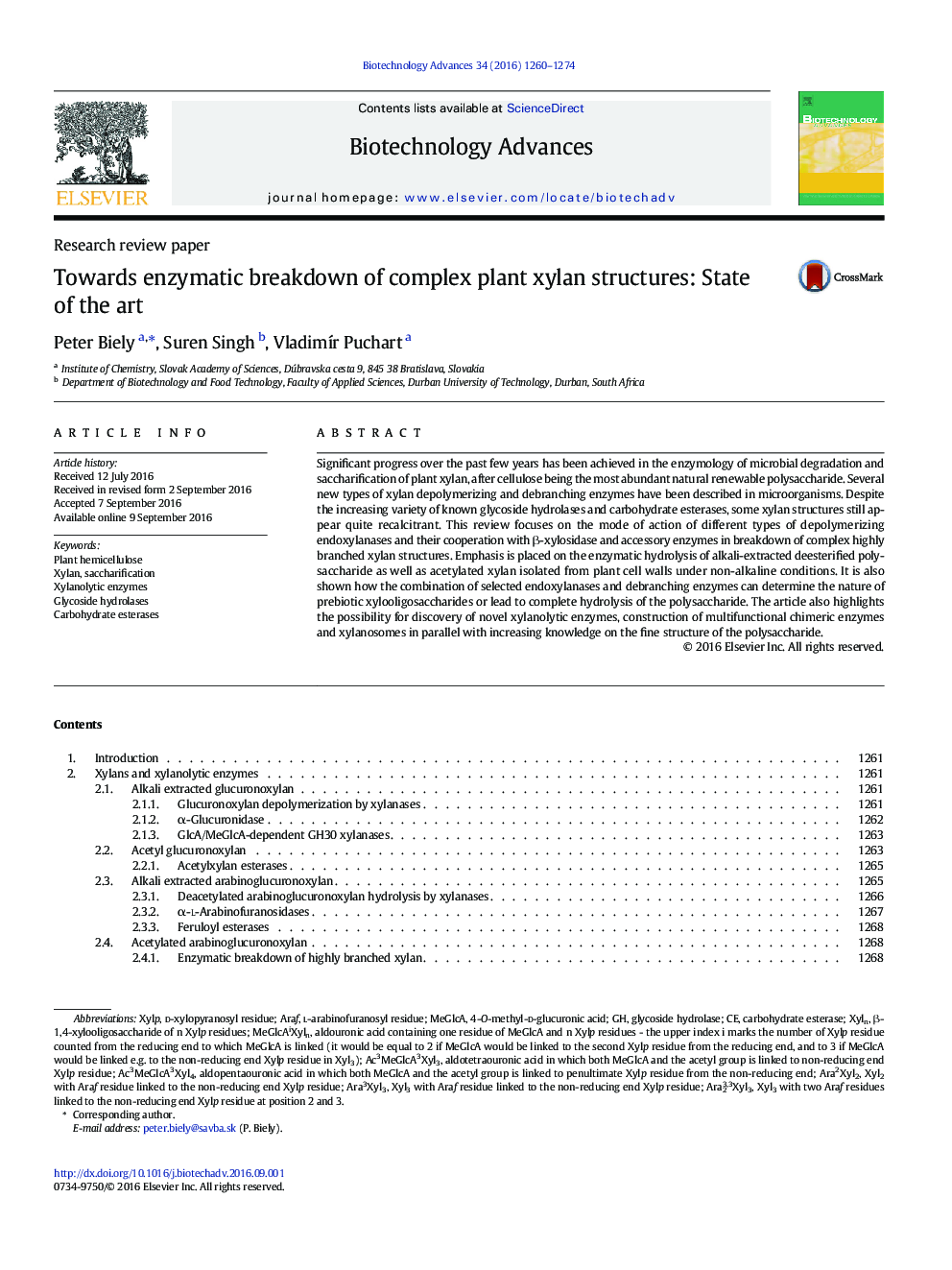| Article ID | Journal | Published Year | Pages | File Type |
|---|---|---|---|---|
| 4752543 | Biotechnology Advances | 2016 | 15 Pages |
Significant progress over the past few years has been achieved in the enzymology of microbial degradation and saccharification of plant xylan, after cellulose being the most abundant natural renewable polysaccharide. Several new types of xylan depolymerizing and debranching enzymes have been described in microorganisms. Despite the increasing variety of known glycoside hydrolases and carbohydrate esterases, some xylan structures still appear quite recalcitrant. This review focuses on the mode of action of different types of depolymerizing endoxylanases and their cooperation with β-xylosidase and accessory enzymes in breakdown of complex highly branched xylan structures. Emphasis is placed on the enzymatic hydrolysis of alkali-extracted deesterified polysaccharide as well as acetylated xylan isolated from plant cell walls under non-alkaline conditions. It is also shown how the combination of selected endoxylanases and debranching enzymes can determine the nature of prebiotic xylooligosaccharides or lead to complete hydrolysis of the polysaccharide. The article also highlights the possibility for discovery of novel xylanolytic enzymes, construction of multifunctional chimeric enzymes and xylanosomes in parallel with increasing knowledge on the fine structure of the polysaccharide.
